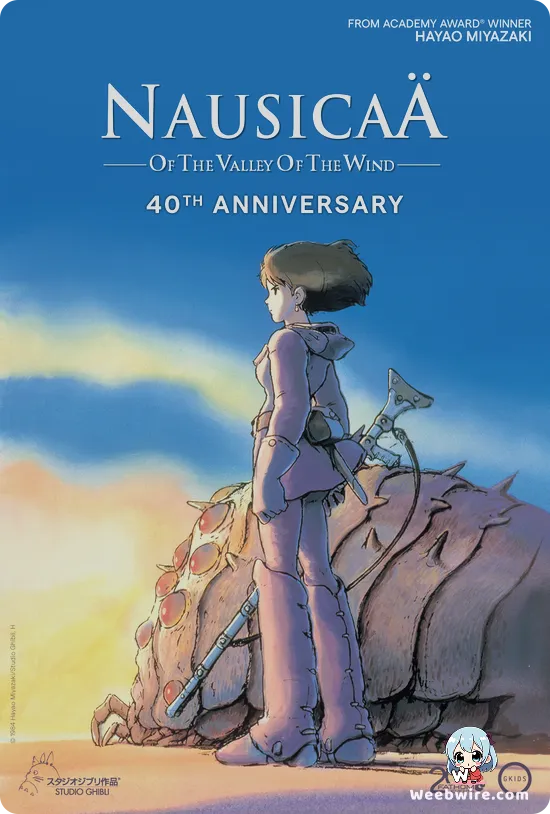

© Topcraft (predecessor to Studio Ghibli), Studio Hibari was incorrectly listed as the studio involved in this film. The actual involvement was by Topcraft.www.netflix.com
Overview
Nausicaä of the Valley of the Wind, a monumental animated feature directed by the visionary Hayao Miyazaki, transports viewers to a meticulously crafted post-apocalyptic future. Set a millennium after the 'Seven Days of Fire,' a cataclysmic global conflict that ravaged human civilization and irrevocably altered Earth's environment, the film introduces a world where humanity struggles for survival against a toxic forest known as the Sea of Corruption and its colossal insect inhabitants, the Ohmu. At the heart of this ecological struggle is Nausicaä, the compassionate and courageous young princess of the peaceful Valley of the Wind. Her unique ability to communicate with the giant insects and her profound understanding of the corrupted ecosystem position her as a pivotal figure in a world teetering on the brink of another devastating war. The narrative intricately weaves together themes of pacifism, deep environmentalism, and the inherent human drive for survival, as Nausicaä endeavors to mediate between her people and the aggressive, militaristic nations of Torumekia and Dorok. Her journey is one of profound discovery, revealing the delicate interconnectedness of all life and emphasizing the critical importance of achieving harmony with nature, even in its most fearsome manifestations. The film is celebrated not only for its groundbreaking animation and breathtaking visuals, which vividly depict both the decaying grandeur of the old world and the vibrant, dangerous beauty of the new, but also for its exploration of complex philosophical questions regarding humanity's place in the natural world, solidifying its status as a timeless classic in the canon of animated cinema. <
Opinion
Hayao Miyazaki's 'Nausicaä of the Valley of the Wind' stands as a seminal work in animation, demonstrating an exceptional blend of artistic ambition and thematic depth. The animation, a product of Topcraft before its evolution into Studio Ghibli, is remarkably detailed and fluid, particularly in its depiction of the vast, intricate landscapes of the Sea of Corruption and the majestic, often terrifying, movements of the Ohmu. Character designs are expressive, and the mechanical elements, from airships to weaponry, are rendered with a tangible sense of functional realism. The voice acting, led by Sumi Shimamoto as Nausicaä, delivers performances that are both nuanced and powerful, conveying the characters' complex emotions and convictions without resorting to overt melodrama. Story pacing is deliberate yet consistently engaging, allowing ample time for world-building and character development while building tension effectively through its action sequences. Nausicaä herself undergoes significant growth, evolving from a curious explorer to a selfless leader, her pacifist ideals challenged and ultimately strengthened by the harsh realities of her world. Thematic depth is perhaps the film's strongest asset; its exploration of environmental destruction, the futility of war, and the potential for coexistence between humanity and nature is handled with extraordinary maturity and foresight, themes that remain profoundly relevant today. The score by Joe Hisaishi further elevates the experience, providing an evocative backdrop that enhances the film's emotional resonance and epic scale. This film is not merely entertainment; it is a profound artistic statement that continues to resonate with audiences globally.
Characters
Nausicaä
Voice: Sumi Shimamoto
Asbel
Voice: Yōji Matsuda
Credits
Studio
Topcraft (predecessor to Studio Ghibli), Studio Hibari was incorrectly listed as the studio involved in this film. The actual involvement was by Topcraft.
Cover Art
Hayao Miyazaki
Publisher
Tokuma Shoten
Producers
Isao Takahata, Yasuyoshi Tokuma
Episodes
Season 1
1 episodesInformation
Genres
Related Anime

Fullmetal Alchemist: Brotherhood

Haikyu!!

Attack on Titan

Hunter x Hunter Story, Characters, Revival News, & Similar Anime

Hajime no Ippo: The Fighting!
